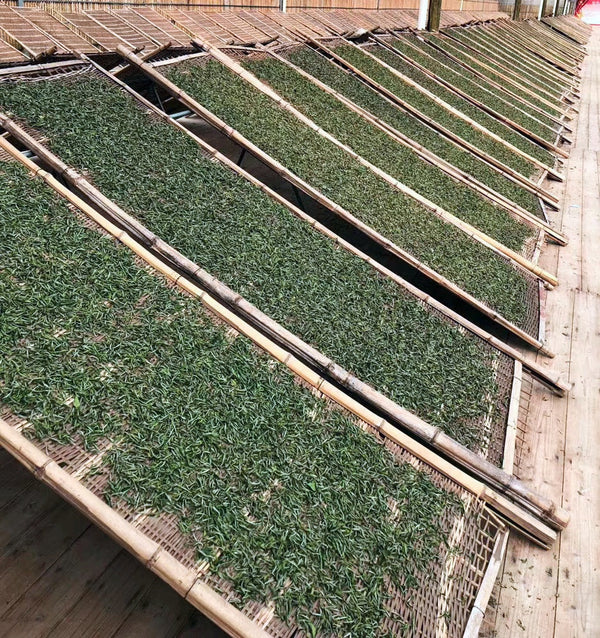What is white tea?
Learn about white tea, its varieties, place of origin, how to prepare it properly, and discover what it tastes like and what effects it has.
White tea gets its name from the silvery, white fluff that covers the buds thickly, and this type of tea also has the lightest brew.
Of the 6 types of tea, this tea is the least processed, meaning the processing process is the shortest.
After harvesting, the raw material - in the case of traditional processing - is first lightly wilted in the shade and then in the sun, and then finally dried.
White tea is a minimally oxidized, unrolled type of tea, so if you buy it loose, you may be surprised at how huge 50 grams of white tea seems compared to, say, Taiwanese oolong tea of the same weight.
Its brew is usually light, soft and refreshing, like a light Italian Riesling.
- Its taste and aroma are floral, sweet, peachy, very elegant, if we are talking about young white tea, if we are talking about matured, older tea (5-7 year old white tea), then it has a very dense floral honey-like character like old apricot jam.
- The color of the fresh white tea brew is very pale, silvery green if we are talking about white tea that is a few years old. If we are talking about older, mature white tea that is around 5-10 years old, the color of the brew is amber, golden.
- It can also be found in fibrous or pressed disc form, just like puer teas. It is easier to ripen, store and transport, so white teas are a particularly valuable tea if they are ripened properly.
Origin of white tea
Originally from Fujian province, white tea is also made from Yunnan raw materials. Of course, depending on the growing area, a Yunnan white tea has a different character than one from the original growing area.
Its main growing areas are: Jian Yang, Fuding, and Zheng He counties, northeastern Fujian province. First records indicate the Tai Mu Shan region as the oldest growing area.
White tea processing
Based on the above, you would think that making this type of tea would be easy, as it requires little processing. However, this is not the case.
The sensitive, fragile raw material easily loses its color, flavor, character, and aroma if it is not taken care of by competent craftsmen during the process.
For example, leaves that are already dry on the surface can remain wet on the inside if proper care is not taken with turning and the right temperature. The finished tea will have a stale or off-flavor.
According to an experienced tea master, the key is to choose the right speed and temperature.
Tea pickers pick four "common" leaf combinations to make this least processed type of tea:
- Bai Hao Yin Zhen (Silver Needle),
- Bai Mu Dan (white peony),
- Gong Mei,
- Shou Mei (Eyebrow of Eternity).
Unlike green tea, which involves baking the tea leaves at higher temperatures (to stop oxidation), it is dried naturally in the sun at lower temperatures, thus preserving the tea leaves' higher polyphenol content.
Traditionally, freshly picked leaves and buds are left in the shade to lose moisture, then placed in large bamboo trays in the sun to dry. You can see this in the video and in this photo.

If the sun is not shining, the final drying is done in heated rooms, also on bamboo trays, placing the leaves in thin layers.
The price of tea depends on many factors. The most important are the place of production, the time of year when it was picked, and whether it consists of only buds or leaves. The more buds a tea has, the higher its price. Tea consisting only of buds is the most expensive, as it is picked by hand and a very large amount of the many small buds must be removed to get a saleable amount of tea.
Making white tea
It is brewed at a lower temperature than fermented or more oxidized teas. A water temperature of around 85-90 C is suitable, and the steeping time depends on whether you are using the Asian or European method.
You should use soft water with a low mineral content, with a total dissolved mineral content of less than 200 mg/liter. Good-tasting spring water or filtered water is best.
Effect of white tea
Due to the gentle processing, this type of tea contains many useful active ingredients . It may play a role in maintaining beautiful skin and healthy teeth , and you can read a lot about its other supposed or real effects on other forums.
We wouldn't go into that because we are neither doctors nor researchers.
What we recommend, however, is to pay attention to your body's response while consuming it! :)
Here is an English-language study on its beneficial health effects .



